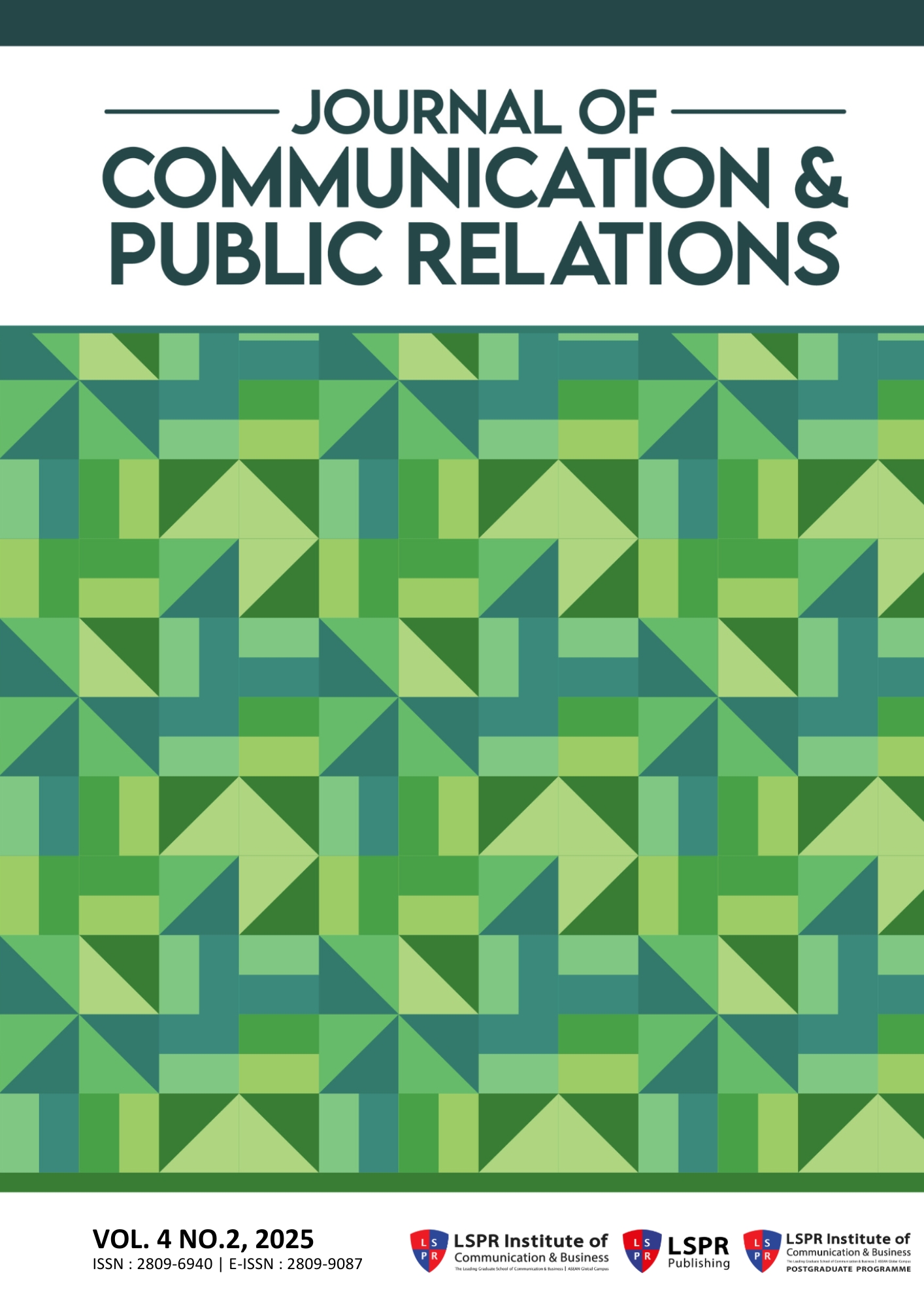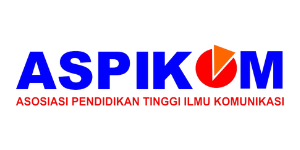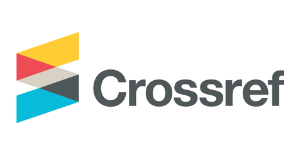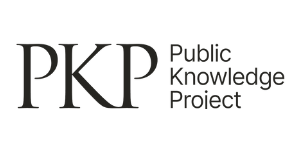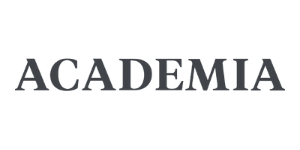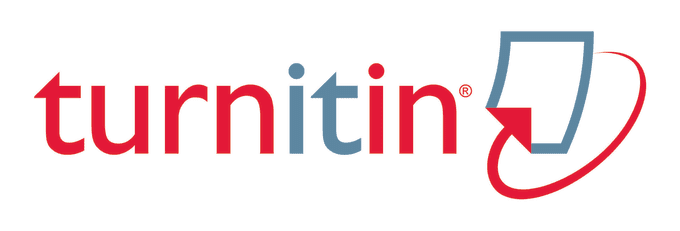“Blame Miners, not the Government”
An Image Repair Perspective of the Oyo State Government’s Response to the Ibadan Explosion in Nigeria
DOI:
https://doi.org/10.37535/105004220254Keywords:
crisis communication, image repair theory, oyo state government, ibadan explosion, nigeriaAbstract
A compelling example of events that attracted public interest in crisis response and image repair is the recent deadly explosion in Ibadan, the capital of Oyo State, Nigeria, an event with significant implications for public safety, citizen well-being, and government credibility. This case is particularly relevant to governmental communication, as effective crisis communication strategies are vital for image repair during and after such events. Despite the frequency of crises involving Nigerian institutions, and the tendency for such crises to be politicized, there is a notable dearth of empirical studies applying Benoit’s Image Repair Theory to governmental responses. This study addresses that gap by examining how the Oyo State Government restored its image and reputation following the explosion. Using Image Repair Theory as a framework, the study analyzed official communications posted on the Oyo State government’s X (formerly Twitter) page. Findings indicate that the public rejected the government's initial denial, but image repair was achieved through corrective action and compensation. This paper argues that government must not be discreet with its crisis response strategies. The analysis, therefore, underscores the importance of transparency and political leaders' visible presence and empathy in enhancing the effectiveness of image repair strategies. These findings contribute to the crisis communication and governance literature, offering broader implications for crisis management and political accountability in Nigeria.
References
Adegbola, O., & Okunloye, O. (2022). A tale of two kidnapings: Government response to Chibok & Dapchi attacks in Nigeria. Public Relations Review, 48(5), 102248. https://doi.org/10.1016/j.pubrev.2022.102248
Adeyemi, O., Eke, C., & Chimezie, H. U. (2024). Crisis Management in Nigeria’s Electoral Processes: The Role of Public Relations In Building Trust and Stability. Advance Journal of Linguistics and Mass Communication, 8(6), 84-102. https://www.researchgate.net/publication/387501613_CRISIS_MANAGEMENT_IN_NIGERIA'S_ELECTORAL_PROCESSES_THE_ROLE_OF_PUBLIC_RELATIONS_IN_BUILDING_TRUST_AND_STABILITY
Adim, V. ., & Ekpa, H. I. (2020a). Crisis Response Strategies and Organizational Survival: a Case of Dana Air Nigeria Limited. Strategic Journal of Business & Change Management, 7(4), 1567 – 1582. https://doi.org/10.61426/sjbcm.v7i4.1883
Benoit, W. (2021, November 29). Image Repair in Crisis Communication. Oxford Research Encyclopedia of Politics. Retrieved 28 Aug. 2025, from https://oxfordre.com/politics/view/10.1093/acrefore/9780190228637.001.0001/acrefore-9780190228637-e-1593.
Benoit, W. L. (2006). President bush’s image repair effort on meet the press: The complexities of defeasibility. Journal of Applied Communication Research, 34(3), 285–306. https://doi.org/10.1080/00909880600771635
Benoit, W. L. (2014). President Barack Obama’s image repair on HealthCare.gov. Public Relations Review, 40(5), 733–738. https://doi.org/10.1016/j.pubrev.2014.07.003
Benoit, W. L. (2018). Production of image repair strategies in the 2016 American presidential debates. Langage et Societe, 164(2), 25–38. https://doi.org/10.3917/ls.164.0025
Benoit, W. L., & Henson, J. R. (2009). President Bush’s image repair discourse on Hurricane Katrina. Public Relations Review, 35(1), 40–46. https://doi.org/10.1016/j.pubrev.2008.09.022
Britannica. (2025, August 23). Ibadan. Encyclopedia Britannica. https://www.britannica.com/place/Ibadan
Cannaerts, N. (2021). Crisis communication in public emergencies: multistakeholders’ perspectives. International Journal of Emergency Services, 10(1), 112–130. https://doi.org/10.1108/IJES-07-2019-0038
Cevik, S. B. (2024). Turkey’s Apology and Image Repair on the Centennial of the Armenian Genocide. Nationalities Papers, 52(1), 167–177. https://doi.org/10.1017/nps.2022.28
Christensen, T., & Lægreid, P. (2020). The coronavirus crisis—crisis communication, meaning-making, and reputation management. International Public Management Journal, 23(5), 713–729. https://doi.org/10.1080/10967494.2020.1812455 https://doi.org/10.1016/j.pubrev.2011.11.003
Citrawijaya, O. R., Susanto, B. K., & Amalia, D. A. (2024). The Role of Communication Strategies in Crisis Management: A Comparative Analysis Across Industries. https://doi.org/10.59613/cej49p88
Coombs, W., Frandsen, F., Holladay, S. J., & Johansen, W. (2010). Why a concern for apologia and crisis communication? Corporate Communications: An International Journal, 15(4), 337–349. https://doi.org/10.1108/13563281011085466
Coombs, W. T. (2004). Impact of past crises on current crisis communication: Insights from situational crisis communication theory. Journal of Business Communication, 41(3), 265–289. https://doi.org/10.1177/0021943604265607
Coombs, W. T. (2006). The Protective Powers of Crisis Response Strategies. Journal of Promotion Management, 12 (3/4)(July), 39–46. https://doi.org/10.1300/J057v12n03
Coombs, W. T. (2007). Protecting Organization Reputations During a Crisis: The Development and Application of Situational Crisis Communication Theory. Corporate Reputation Review, 10(3), 163–176. https://doi.org/10.1057/palgrave.crr.1550049
Dominic, E. D., Mahamed, M., Eddington Obaro, J., Erica, O. A., & Maledo, R. O. (2024). Expounding organizational reputation/Crisis: Exploring its definitional landscape. International Journal of Academic Research in Business and Social Sciences, 14(8). https://doi.org/10.6007/ijarbss/v14-i8/21880
Eyo, N. . (2025). Re-conceptualizing Public Relations Practices in Nigeria : A Framework to Address Systemic Challenges. Journal of Communication and Public Relations, 4(1), 76–101. https://doi.org/10.37535/105004120255
Fadipe, I. ., & Bakenne, N. . (2020). BBC Sex-for-Grades-Report: Nigeria Tertiary Institutions ‘Crisis Management Strategies and Stakeholders’ Reactions. The Journal of Society and Media, 4(1), 156. https://doi.org/10.26740/jsm.v4n1.p156-179
Fisipol. (2021, November 22). Crisis Communication as A Crucial Part of Crisis Management. Faculty of Social and Political Sciences. https://fisipol.ugm.ac.id/en/crisis-communication-as-a-crucial-part-of-crisis-management/
Galasso, V. (2014). The role of political partisanship during economic crises. Public Choice, 158(1–2), 143–165. https://doi.org/10.1007/s11127-012-9956-6
Hamid, A. S., Mohamad, B., & Ismail, A. (2024). Internal crisis communication: Exploring antecedents and consequences from a managerial viewpoint. Frontiers in Communication, 9. https://doi.org/10.3389/fcomm.2024.1444114
Haupt, B. (2021). The Use of Crisis Communication Strategies in Emergency Management. Journal of Homeland Security and Emergency Management, 18(2), 125–150. https://doi.org/10.1515/jhsem-2020-0039
Hettiarachchi Maha Hettiarachchige, A. H., Cabiddu, F., & Moi, L. (2025). Preparing for the inevitable: Strategically navigating negative publicity in the contemporary business landscape. Business Horizons, 68(2), 139-151. https://doi.org/10.1016/j.bushor.2024.10.010
Hobbs, M., Li, M., Huang, Z. A., & Desmoulins, L. (2025). Storytelling and grand strategy in public diplomacy: A case study of the speeches of President Xi Jinping. Public Relations Review, 51(4), 102594. https://doi.org/10.1016/j.pubrev.2025.102594
Ibndaaud. (2024, January 22). Idris Ibn DA'UD. X (formerly Twitter). https://x.com/ibndaaud/status/1749133588962963706?s=19
Iftikhar, R., Majeed, M., & Drouin, N. (2023). Crisis management process for project-based organizations. International Journal of Managing Projects in Business, 16(8), 100-125. https://doi.org/10.1108/ijmpb-10-2020-0306
Jacobs, L., & King, D. (2009). America’s political crisis: The unsustainable state in a time of unraveling. PS - Political Science and Politics, 42(2), 277–285. https://doi.org/10.1017/S1049096509090568
Jagabanolu. (2024, January 22). CitizenOlu. X (formerly Twitter). https://x.com/jagabanolu/status/1749132619114057769?s=19
Johnson, T. (2018). Deny and Attack or Concede and Correct? Image Repair and the Politically Scandalized. Journal of Political Marketing, 17(3), 213–234. https://doi.org/10.1080/15377857.2015.1039745
Khan, R. ., Salamzadeh, Y., Iqbal, Q., & Yang, S. (2022). The Impact of Customer Relationship Management and Company Reputation on Customer Loyalty: The Mediating Role of Customer Satisfaction. Journal of Relationship Marketing, 21(1), 1–26. https://doi.org/10.1080/15332667.2020.1840904
LanreOLAIDE1. (2024, January 22). Lanre OLAIDE. X (formerly Twitter). https://x.com/LanreOLAIDE1/status/1749360660624904627?s=19
Lauzen, M. M. (2016). Image repair: A case study of Thierry Frémaux and the Cannes Film Festival. Public Relations Review, 42(1), 170–175. https://doi.org/10.1016/j.pubrev.2015.11.002
Marsen, S. (2020). Navigating Crisis: The Role of Communication in Organizational Crisis. International Journal of Business Communication, 57(2), 163–175. https://doi.org/10.1177/2329488419882981
Matias, A., & Cardoso, L. (2023). Crisis communication: Theoretical perspectives and dynamics of a complex concept. VISUAL REVIEW. International Visual Culture Review / Revista Internacional de Cultura Visual, 14(1), 1-15. https://doi.org/10.37467/revvisual.v10.4597
Momoh, S. A., Okoye, C., & Eze, U. H. (2025). Good governance and national development in Nigeria: Challenges and prospects. Global Journal of Political Science and Administration, 13(1), 1-24. https://doi.org/10.37745/gjpsa.2013/vol13n1124
Nwogwugwu, D. I., & Oyewo, O. . (2024). The Palgrave handbook of language and crisis communication in sub-Saharan Africa. In E. Jakaza, H. Mangeya, & I. Mhute (Eds.), The Palgrave Handbook of Language and Crisis Communication in Sub-Saharan Africa. Palgrave Macmillan UK. https://doi.org/10.1007/978-3-031-43059-6
Ogunyombo, O. E. (2022). Espousing the Image Restoration-Depletion Model of Personality Crisis Management in the case of Kemi Adeosun ’ s certificate crisis : A public relations perspective. Journal of Communication and Media Research, 14(2), 50–63.
Okedare, A. (2024, January 17). Ibadan explosion in Nigeria: 'The roof fell on my mother in bed'. BBC Breaking News, World News, US News, Sports, Business, Innovation, Climate, Culture, Travel, Video & Audio. https://www.bbc.com/news/world-africa-68002936
Oluyemi007. (2024, January 22). Uncle Yemi. X (formerly Twitter). https://x.com/Oluyemi007/status/1749132229886787664?s=19
OyoStateGovt. (2024). Official X Account of Oyo State Government (@oyostategovt). X (formerly Twitter). https://twitter.com/oyostategovt?lang=en
Oyostategovt. (2024a, January 17). Official X Account of Oyo State Government (@oyostategovt). X (formerly Twitter). https://x.com/oyostategovt/status/1747649942229819450
Oyostategovt. (2024b, January 22). Official X Account of Oyo State Government (@oyostategovt). X (formerly Twitter). https://twitter.com/seyiamakinde/status/1749131848641323226
Parham, J. B. (2021). Protecting a Client’s Reputation: Image Repair Theory and Its Suitability to a Social Media-Generated Crisis [Doctoral dissertation]. ProQuest Dissertations and Theses Global. https://www.proquest.com/openview/be88a99ad8227ac9ac3faa4ef396b628/1?pq-origsite=gscholar&cbl=18750&diss=y
Park, S., & Lee, D. S. (2022). Political Crisis in Central Government and Bureaucrats’ Responses in Provincial Government: The Impact of Governors’ Characteristics. Political Research Quarterly, 75(4), 1186–1200. https://doi.org/10.1177/10659129211053625
Parrott, B. (2020). The American Mega-Crisis: COVID-19 and Beyond. Challenge, 63(5), 245–263. https://doi.org/10.1080/05775132.2020.1804756
Patriche, C. ., Stoica, D., Schin, G. ., & Sava, V. (2025). University reputation management: academic knowledge alchemy. Management Decision. https://doi.org/10.1108/MD-04-2024-0889
Petridou, E. (2020). Politics and administration in times of crisis: Explaining the Swedish response to the COVID-19 crisis. European Policy Analysis, 6(2), 147–158. https://doi.org/10.1002/epa2.1095
Pollák, F., & Markovič, P. (2022). Challenges for Corporate Reputation—Online Reputation Management in Times of Global Pandemic. Journal of Risk and Financial Management, 15(6). https://doi.org/10.3390/jrfm15060250
Oluwamidunsin. (2024, January 17). Dr. Mary. X (formerly Twitter). https://x.com/Oluwamidunsin/status/1747464581952283128
Quinn, P. (2018). Crisis Communication in Public Health Emergencies: The Limits of ‘Legal Control’ and the Risks for Harmful Outcomes in a Digital Age. In Life Sciences, Society and Policy (Vol. 14, Issue 1). Life Sciences, Society and Policy. https://doi.org/10.1186/s40504-018-0067-0
Sarfo-Kantankah, K. S. (2019). Apologia, Image Repair and Rhetoric in the Defence of Electoral Defeat. Advances in Language and Literary Studies, 10(3), 1. https://doi.org/10.7575/aiac.alls.v.10n.3p.1
Seyiamakinde. (2024, January). Seyiamakinde. X (formerly Twitter). https://twitter.com/seyiamakinde/status/1752755603527647482
Seyiamakinde. (2024a, January 22). Seyi Makinde. X (formerly Twitter). https://x.com/seyiamakinde/status/1749131848641323226
Sirilakshmi, Y., T, A., Gogoi, B. P., & Bhuyan, N. (2024). Content Analysis in Qualitative Research: Importance and Application. In Exploring Narratives: A Guide to Qualitative Research Methods . P.K. Publishers. https://www.researchgate.net/publication/385973745_Content_Analysis_In_Qualitative_Research_Importance_And_Application
Stolle, S. (2022, November 19). Textual Analysis – Definition, Approaches & Fields. BachelorPrint. https://www.bachelorprint.com/methodology/textual-analysis/ (retrieved 08.29.2025)
Sunday, A. C., Moses, I. C., & K, E. I. (2021). Assessment of Nigerian State and its unending Governance Crisis. International Journal of Academic Pedagogical Research (IJAPR), 5(8), 23-32. https://www.researchgate.net/publication/361514753_Assessment_of_Nigerian_State_and_its_unending_Governance_Crisis
Thomsen, S. R. (2023). “Not the company we thought it was.” Southwest Airlines’ attempt at image repair during its october 2021 flight cancellation crisis. Public Relations Review, 49(2). https://doi.org/10.1016/j.pubrev.2023.102309
Tripathi, A., Brahma, A., Malhotra, S., & Akula, V. (2023). Clinical practice guidelines for assessment and management of patients presenting with psychosocial crisis. Indian Journal of Psychiatry, 65(2), 212-220. https://doi.org/10.4103/indianjpsychiatry.indianjpsychiatry_485_22
Varela Castro, S., Bustos, E. O., & Saldivia Gonzatti, D. (2023). Reputation management during a public health crisis: Overcompensating when all else fails. Public Administration Review, 83(5), 1234–1245. https://doi.org/10.1111/puar.13638
Vibeyrerta. (2024, January 17). Rerta. X (formerly Twitter). https://x.com/vibey_rerta/status/1747475846909026735
Von Berlepsch, D., Lemke, F., & Gorton, M. (2022). The importance of corporate reputation for sustainable supply chains: A systematic literature review, bibliometric mapping, and research agenda. Journal of Business Ethics, 189(1), 9-34. https://doi.org/10.1007/s10551-022-05268-x
Vukovic, M., Dasic, D., & Vukovic, A. (2025). Restoration Of Reputation Through Crisis. Tekstilna Industrija, 72(January 2024), 42–50. https://doi.org/10.5937/tekstind2404042V
Wailling, J., Cameron, G., Stolarek, I., Turner, S., Bleakley, B., O’Connor, N., Harwood, C., Power, M., Turner, K., Kooijman, A., Oelke, N. D., Gustafson, D., Robson, R., Anderson Wallace, M., Drennan, G., Hughes, J., O'Hara, J. K., Swanepoel, F., & LeMaster, C. H. (2025). Restorative initiatives: Emerging insights from design, implementation and collaboration in five countries. Frontiers in Health Services, 5. https://doi.org/10.3389/frhs.2025.1472738
Wang, H. (2022). To critique crisis communication as a social practice: An integrated framework. Frontiers in Communication, 7. https://doi.org/10.3389/fcomm.2022.874833
Watkins, D. V., & Clevenger, A. D. (2021). US Political Leadership and Crisis Communication During COVID-19. Cogent Social Sciences, 7(1). https://doi.org/10.1080/23311886.2021.1901365
Zahariadis, N., Petridou, E., Exadaktylos, T., & Sparf, J. (2023). Policy styles and political trust in Europe’s national responses to the COVID-19 crisis. Policy Studies, 44(1), 46–67. https://doi.org/10.1080/01442872.2021.2019211

